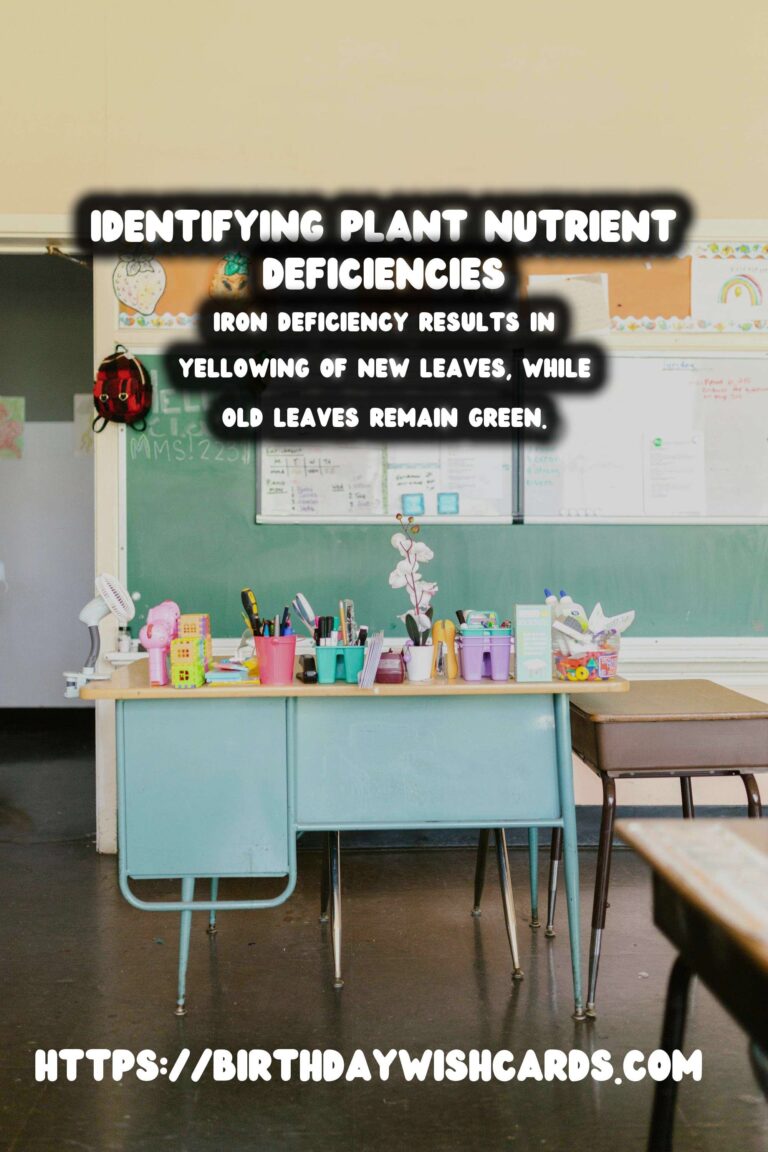
Plants, much like humans, require a balanced diet to thrive. Essential nutrients play a crucial role in various plant functions, and deficiencies can manifest in several visible symptoms. Identifying these symptoms is key to addressing the nutrient deficiencies and ensuring your plants grow healthy and robust.
The Importance of Plant Nutrients
Plants depend on a range of essential nutrients to perform functions such as photosynthesis, growth, and reproduction. These nutrients are generally divided into macronutrients and micronutrients, both of which are vital for plant health. Macronutrients include nitrogen, phosphorus, and potassium, while micronutrients include elements like iron, manganese, and zinc.
Common Nutrient Deficiencies and Their Symptoms
Nitrogen Deficiency
Nitrogen is critical for plant growth as it is a major component of chlorophyll. A nitrogen deficiency often results in older leaves turning yellow, a condition known as chlorosis. Without adequate nitrogen, plants may exhibit stunted growth and reduced yield.
Phosphorus Deficiency
Phosphorus is essential for energy transfer and photosynthesis. Deficiency symptoms include dark green or purplish coloration on older leaves and stunted growth. Plants may also show delayed maturity and poor root development.
Potassium Deficiency
Potassium is crucial for water regulation and disease resistance. Symptoms of potassium deficiency include browning of leaf edges, weak stems, and chlorosis. Plants with potassium deficiency are more susceptible to disease and environmental stress.
Calcium Deficiency
Calcium is important for cell wall structure and stability. Deficiency symptoms include distorted new growth, tip burn on leaves, and blossom end rot in fruits like tomatoes. Calcium deficiency often affects the growing points of plants.
Magnesium Deficiency
Magnesium is a central component of chlorophyll. A deficiency in magnesium will cause older leaves to yellow between the veins, a condition known as interveinal chlorosis, while the veins themselves remain green.
Iron Deficiency
Iron is vital for chlorophyll synthesis and enzyme function. Iron deficiency results in yellowing of new leaves, while old leaves remain green. This often leads to reduced growth and poor plant vigor.
Diagnosing and Treating Nutrient Deficiencies
To diagnose nutrient deficiencies accurately, it is essential to observe the plant’s overall health and the specific symptoms. Soil testing can provide insight into nutrient levels and guide appropriate fertilization. Once a deficiency is identified, treating it involves adjusting the soil pH, improving soil structure, and applying the correct type and amount of fertilizer.
Balancing nutrient availability can be achieved by using organic amendments, such as compost, which enhances soil fertility and structure. It is also critical to ensure proper watering practices, as over or under-watering can exacerbate nutrient deficiencies.
Preventive Measures
Preventing nutrient deficiencies involves regular soil testing, applying balanced fertilizers, and maintaining healthy soil organic matter. Crop rotation and the use of cover crops can also help maintain soil nutrient levels. Understanding the specific needs of different plant species and varieties is key to preventing deficiencies and ensuring optimal growth.
By recognizing and addressing nutrient deficiencies promptly, gardeners and farmers can ensure their plants remain healthy and productive. Regular monitoring, soil management, and an understanding of plant nutritional needs are essential strategies for successful plant cultivation.
Essential nutrients play a crucial role in various plant functions, and deficiencies can manifest in several visible symptoms. Identifying nutrient deficiency symptoms is key to addressing the deficiencies and ensuring healthy plant growth. Nitrogen deficiency often results in older leaves turning yellow, known as chlorosis. Phosphorus deficiency manifests as dark green or purplish coloration on older leaves and stunted growth. Potassium deficiency leads to browning of leaf edges, weak stems, and increased susceptibility to disease. Calcium deficiency symptoms include distorted new growth and blossom end rot in fruits. Magnesium deficiency causes interveinal chlorosis in older leaves. Iron deficiency results in yellowing of new leaves, while old leaves remain green. Preventing nutrient deficiencies involves regular soil testing and balanced fertilization. 
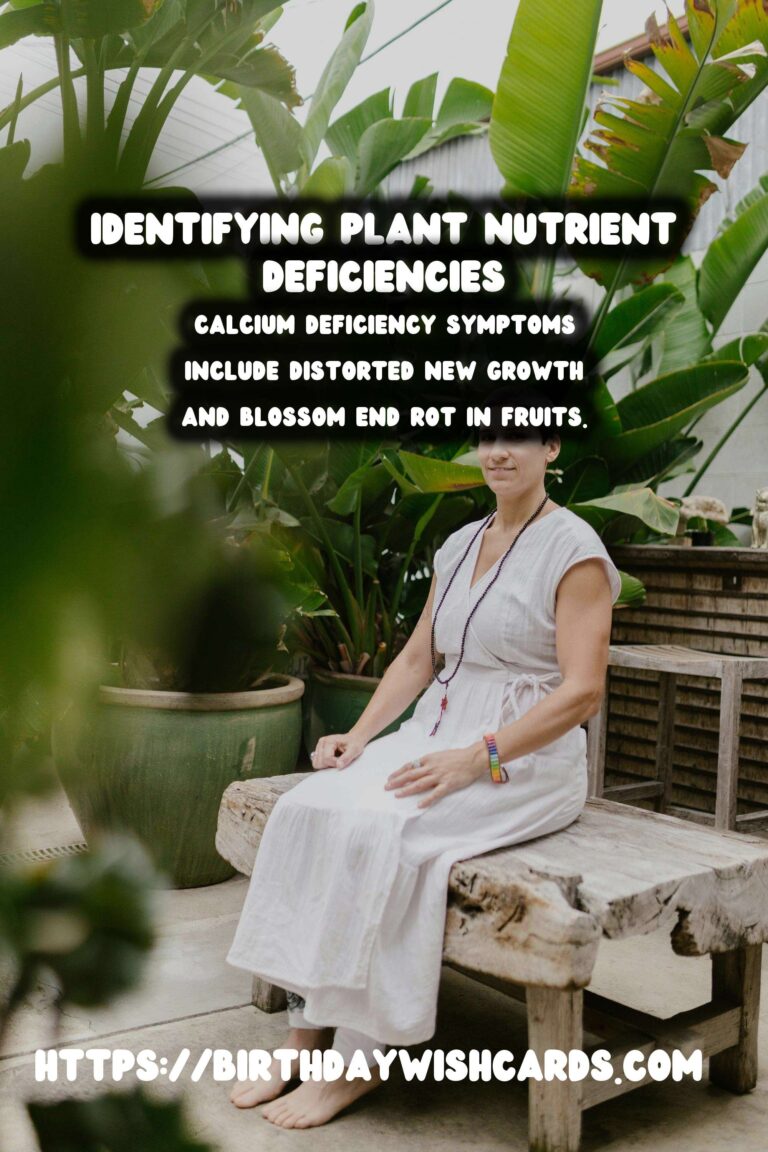
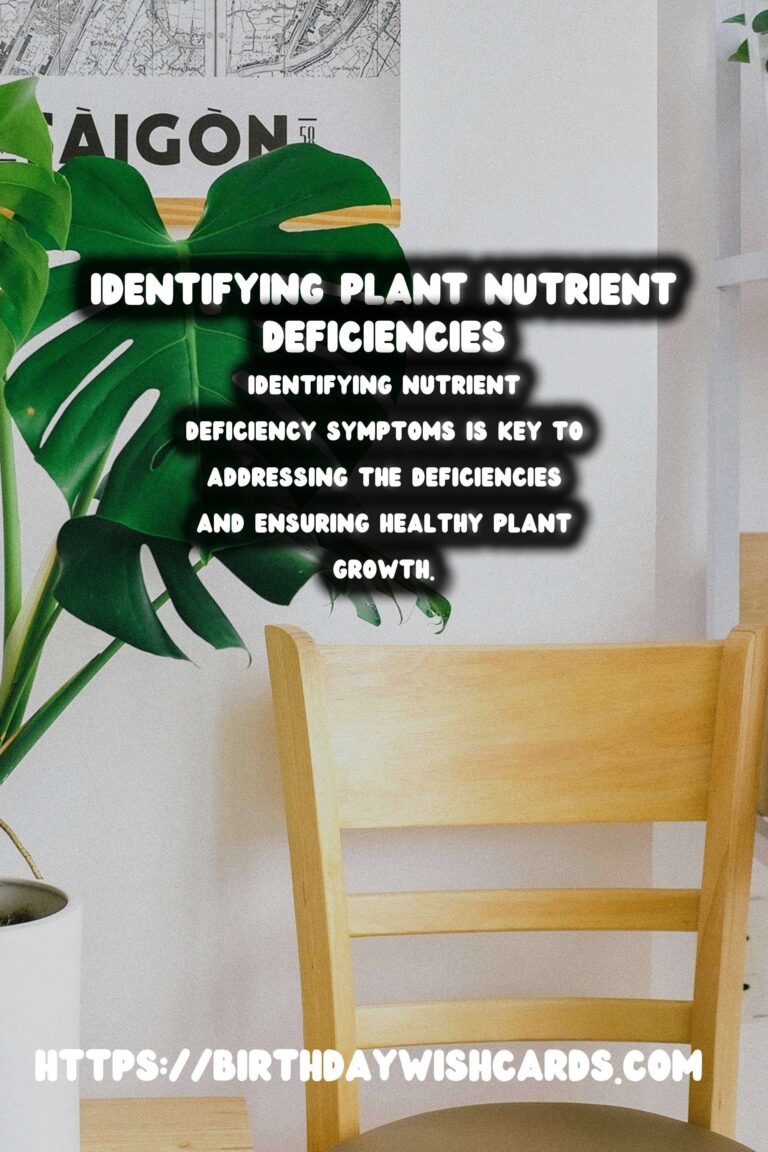
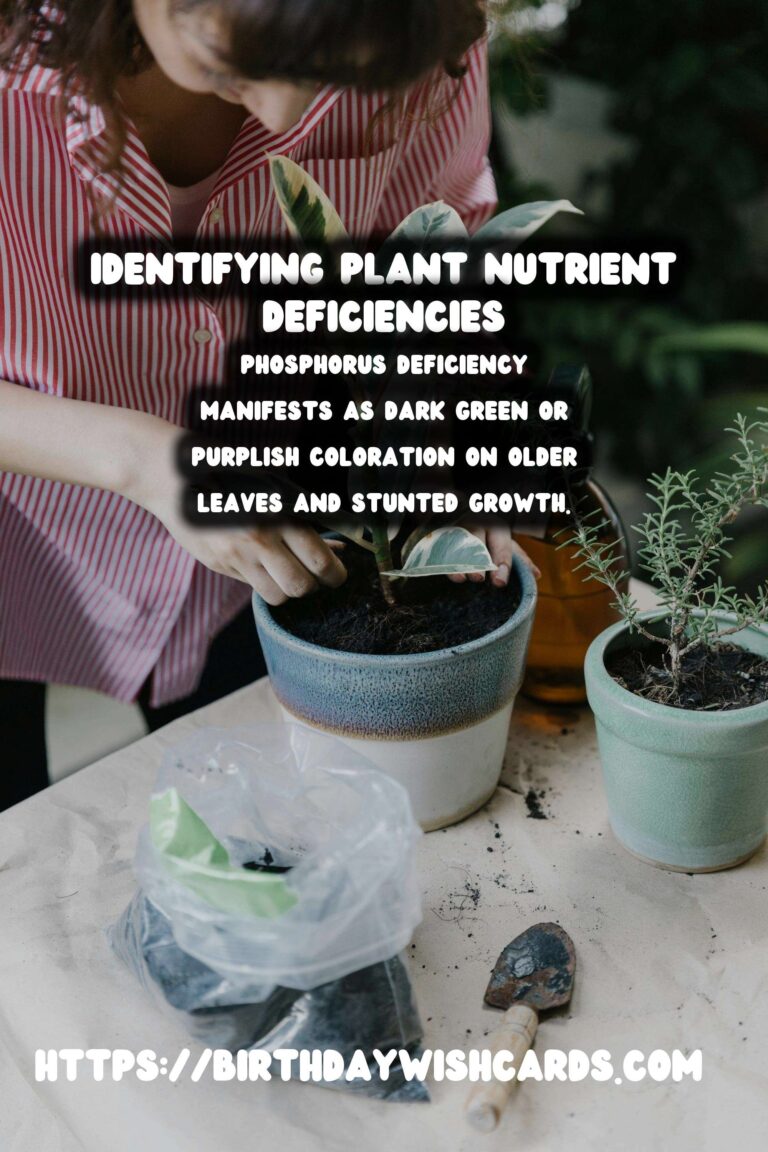
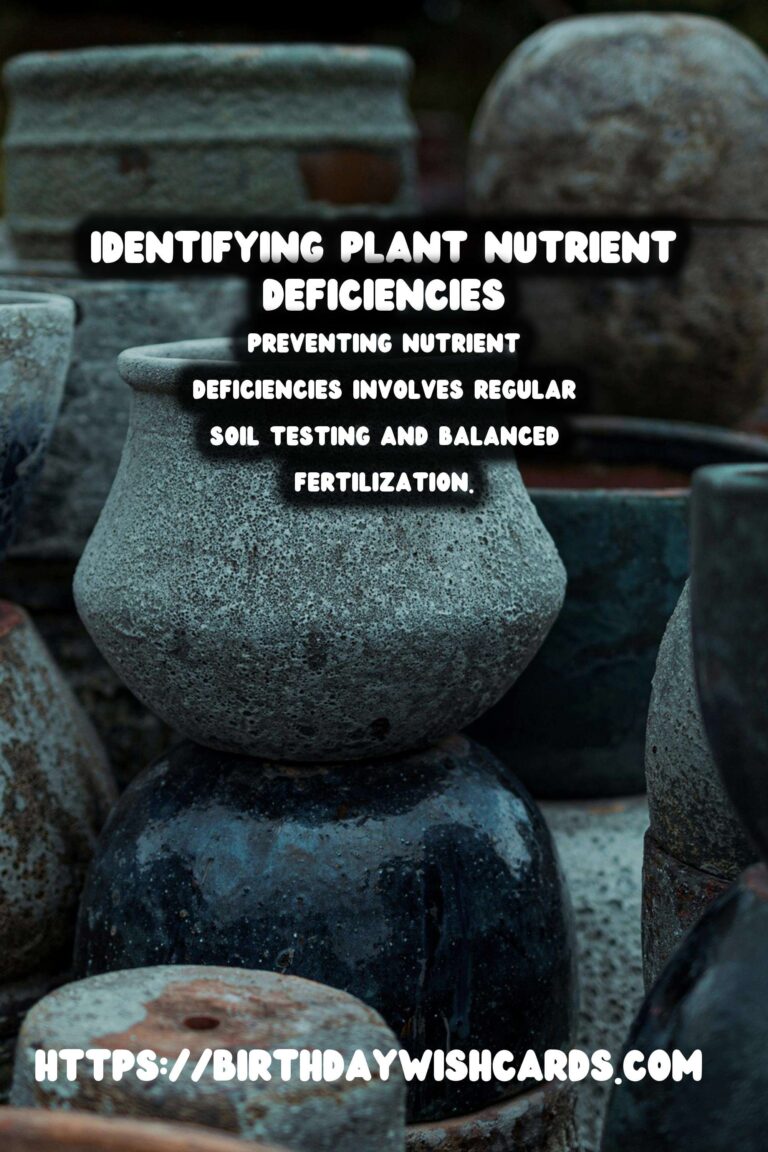
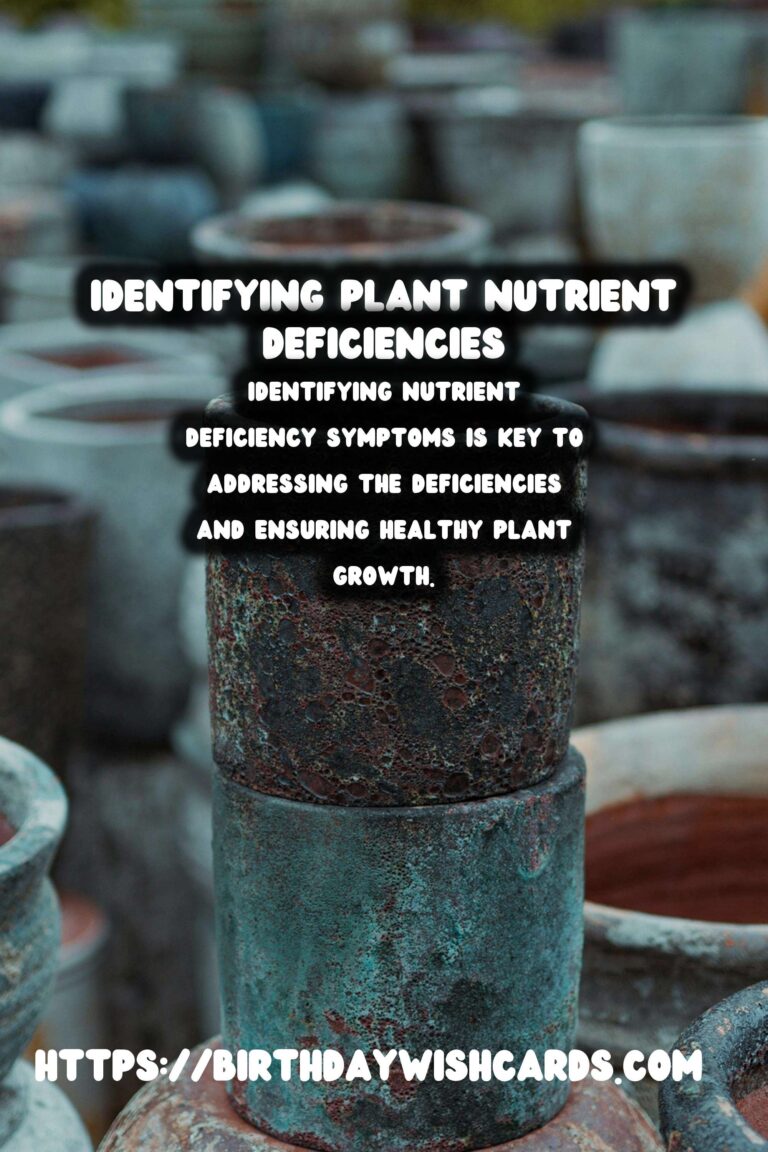

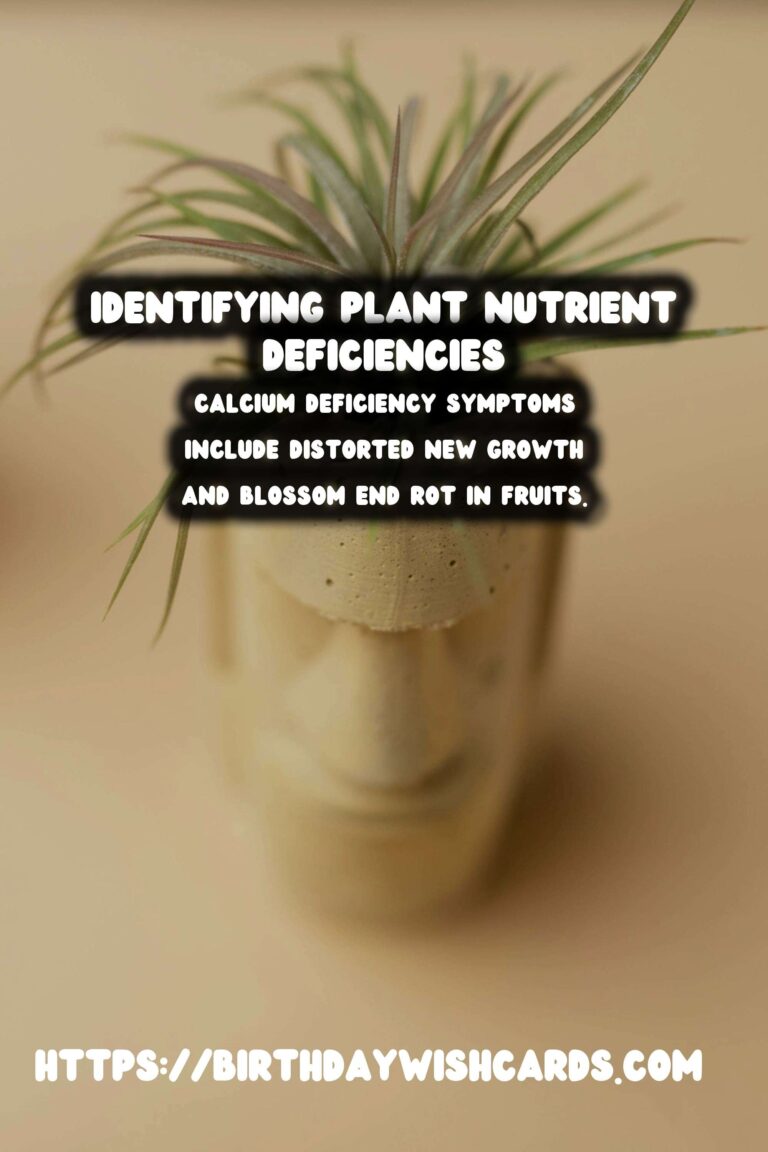
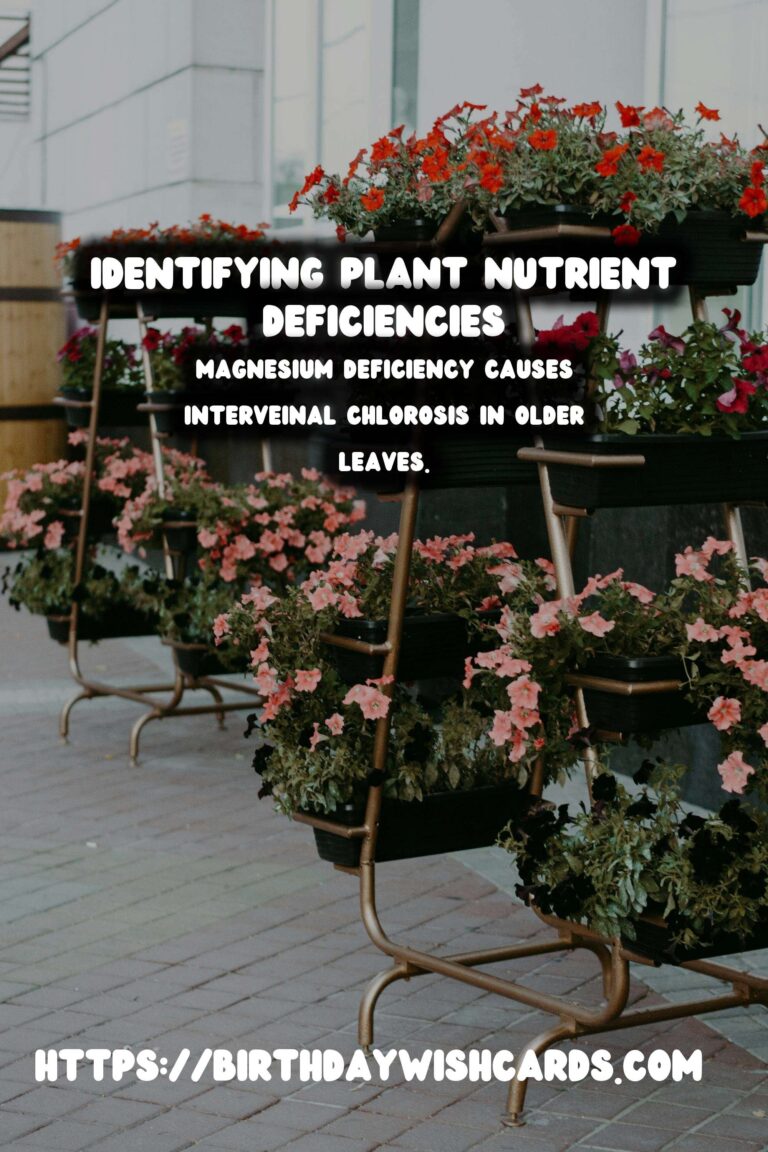
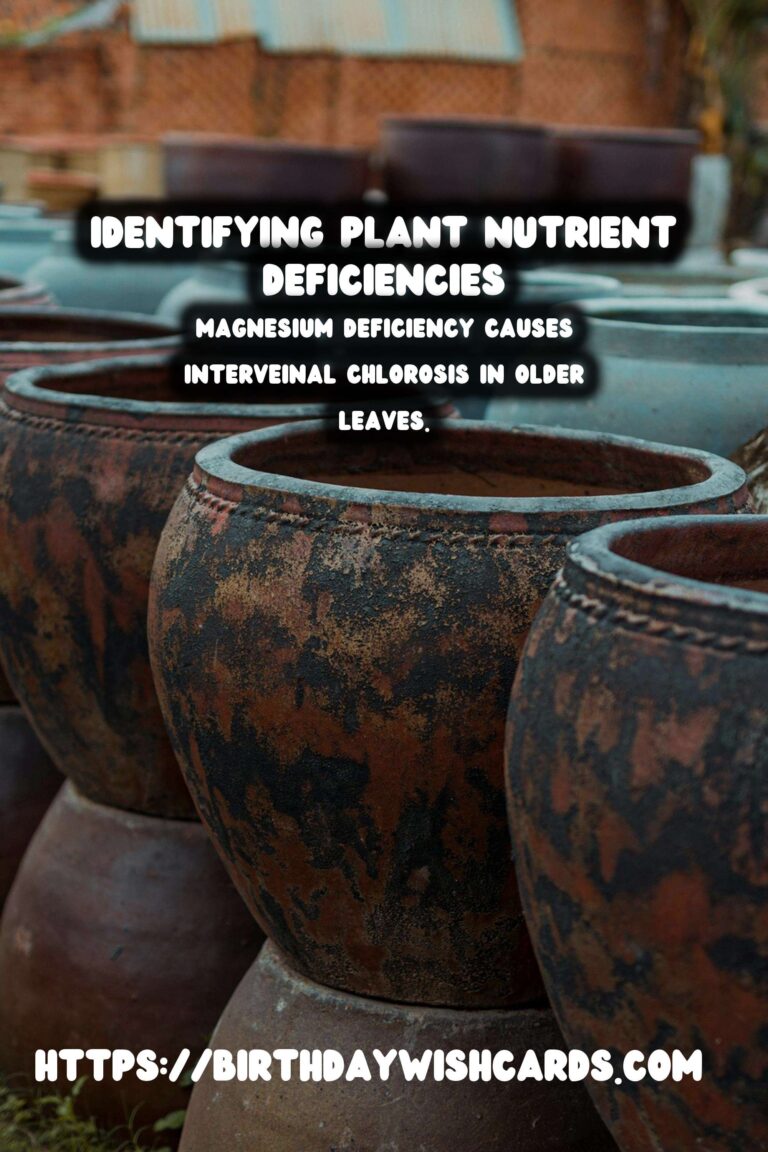
#PlantNutrients #GardeningTips #PlantHealth #NutrientDeficiencies #Gardening




